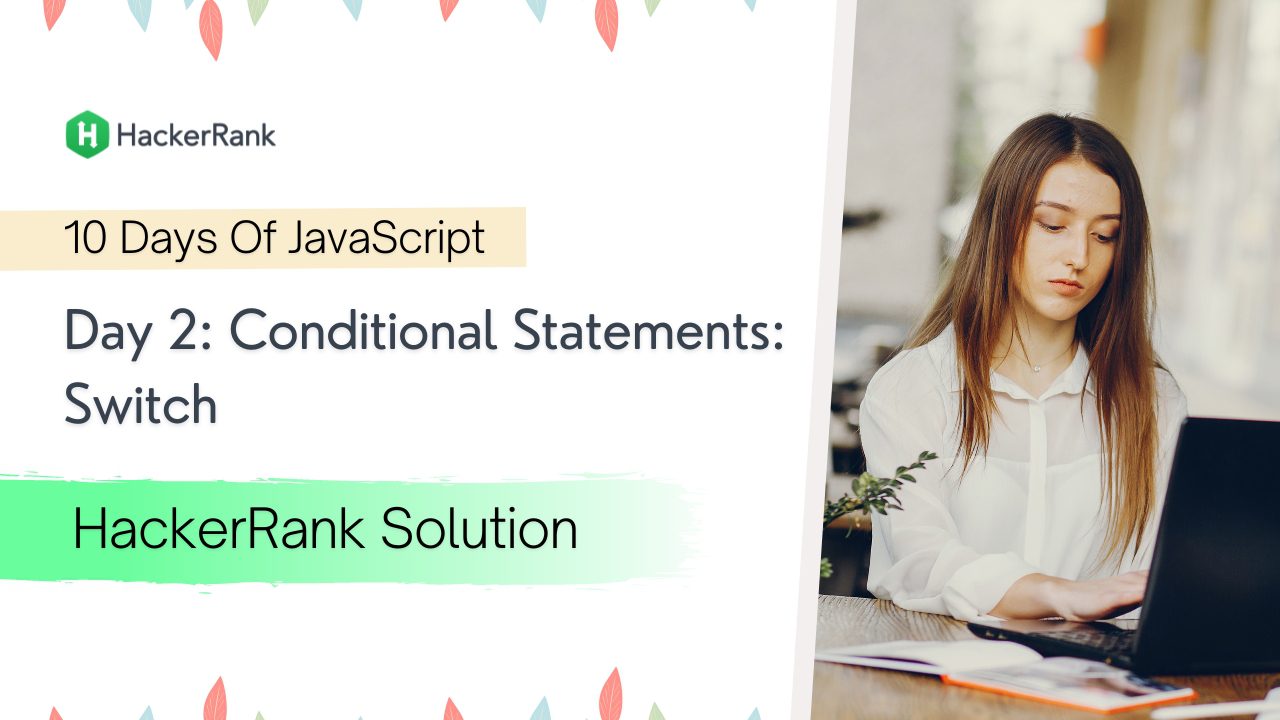Day 2: Conditional Statements: Switch Solution
Hello Friends in this article i am gone to share Hackerrank 10 days of javascript solutions with you. | Day 2: Conditional Statements: Switch Solution.
Also visit this link: Day 1: Let and Const Solution
Day 2: Conditional Statements: Switch Solution
Objective
In this challenge, we learn about switch statements.
Task
Complete the getLetter(s) function in the editor. It has one parameter: a string, s, consisting of lowercase English alphabetic letters (i.e., a through z). It must return A, B, C, or D depending on the following criteria:
- If the first character in string s is in the set {a, e, i, o, u}, then return A.
- If the first character in string s is in the set {b, c, d, f, g}, then return B.
- If the first character in string s is in the set {h, j, k, l, m}, then return C.
- If the first character in string s is in the set {n, p, q, r, s, t, v, w, x, y, z}, then return D.
Hint: You can get the letter at some index i in s using the syntax s[i] or s.charAt(i).
Function Description
Complete the getLetter function in the editor below.
getLetter has the following parameters:
- string s: a string
Returns
- string: a single letter determined as described above
Input Format
Stub code in the editor reads a single string denoting s from stdin.
Constraints
- 1 <= |s| <= 100, where |s| is the length of s.
- String s contains lowercase English alphabetic letters (i.e., a through z) only.
Sample Input 0
adfgt
Sample Output 0
A
Explanation 0
The first character of string s = adfgt is a. Because the given criteria stipulate that we print A any time the first character is in {a, e, i, o, u}, we return A as our answer.
Solution – Day 2: Conditional Statements: Switch
'use strict';
process.stdin.resume();
process.stdin.setEncoding('utf-8');
let inputString = '';
let currentLine = 0;
process.stdin.on('data', inputStdin => {
inputString += inputStdin;
});
process.stdin.on('end', _ => {
inputString = inputString.trim().split('\n').map(string => {
return string.trim();
});
main();
});
function readLine() {
return inputString[currentLine++];
}
function getLetter(s) {
let letter;
// Write your code here
switch (s[0]) {
case ('a' || 'e' || 'o' || 'i' || 'u'):
letter = 'A';
break;
case ('b' || 'c' || 'd' || 'f' || 'g'):
letter = 'B';
break;
case ('h' || 'j' || 'k' || 'l' || 'm'):
letter = 'C';
break;
case ('z' || 'n' || 'p' || 'q' || 'r' || 's' || 't' || 'v' || 'w' || 'x' || 'y'):
letter = 'D';
}
return letter;
}
function main() {
const s = readLine();
console.log(getLetter(s));
}

